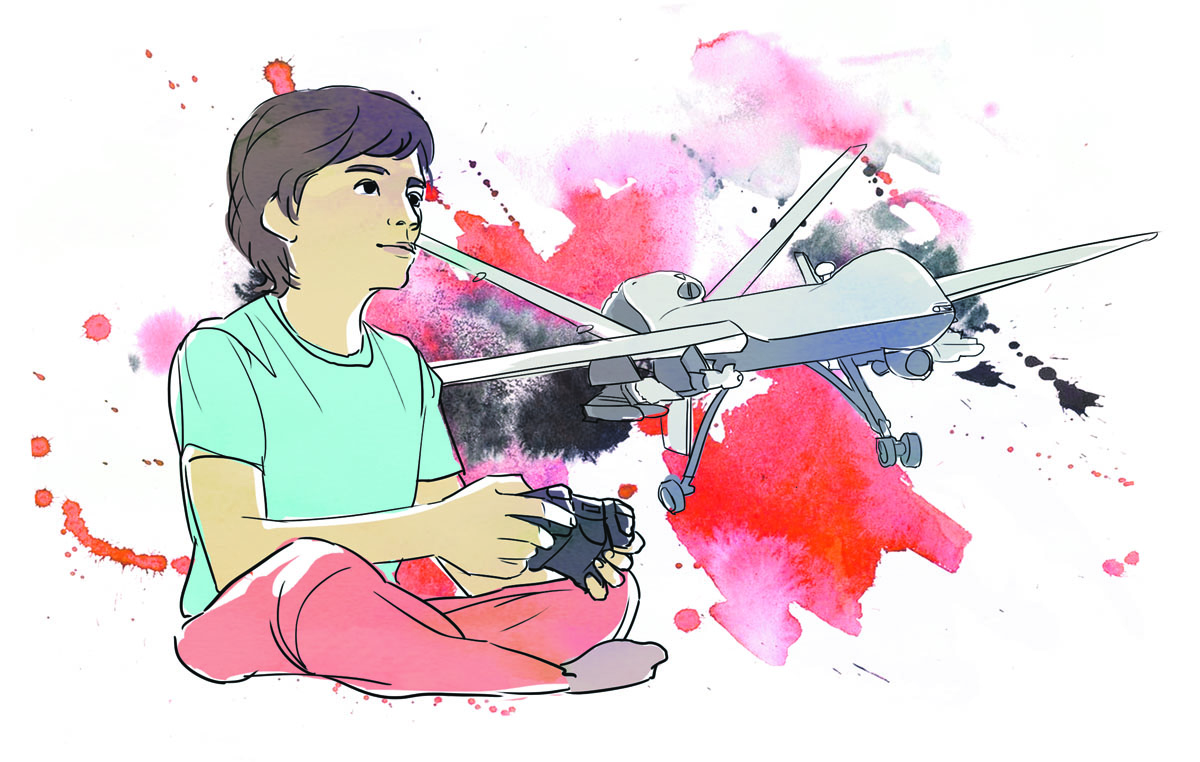Warning: This article contains description of extreme gun violence.
Cameras rushed outside Sandy Hook Elementary School on December 14 with news anchors trailing behind. Less than an hour before, a young man had walked into the school with a Bushmaster rifle shooting both teachers and students, particularly in two first-grade classrooms. Some students heard the gunshots over the morning announcements. Before second-bell, 27 people, mostly children, were dead.
The story is well-known to the public now: images, interviews, and footage were quickly made ubiquitous in all forms of media. Most people have heard first-hand accounts. A little girl hugged the ground until it was quiet. She snuck out of the building covered in blood and ran to her mom, and said, “Mommy, I’m okay, but all my friends are dead.”
How is one supposed to react to a massacre?
Six hours after the shooting, the media coverage of the scene took a break to allow President Barack Obama to speak to the nation. “We’re going to have to come together and take meaningful action to prevent more tragedies like this,” he said, “regardless of the politics.”
A month later, the president ordered Vice President Joe Biden to form a task force that could prevent such events in the future.
The appropriate response to a massacre is to take measures against them.
On January 11, Biden’s task force, including the Secretary of Health and Human Services, met with leading executives of the video game industry to discuss violence in the wake of the Newtown shooting. This meeting was one of many with the various strands of the American entertainment industry. Biden told the Wall Street Journal that he would “come to this meeting with no judgement”; his intent was simply to begin the dialogue about violence.
Five days later, Obama announced 23 executive orders to Congress, including one that asked Congress to investigate the societal effects of violence in video games.
Popular discourse often questions the role of video games in the context of violence within society. However, some in the industry feel like the topic should be put to bed. “I don’t see this as any sort of turning point in the discussion,” said Dan Stapleton, editor-in-chief of GameSpy. He referred to the persistence of this discussion as a “performance to placate” those who blame video games for real-world violence instead of taking action against the violence itself.
Currently, there are more than thirty studies on such a topic, conducted at a variety of institutions, from University of Georgia to Iowa State among others. Most of the results of these studies suggest that video games did not increase violent behaviour, but could – as a study by Albert Einstein College observed – calm children. The study by Iowa State suggested that factors like familial violence and poverty contribute the most to violent behaviour.
The facts pile on: violent crime in the United States peaked in 1991, and the sales of violent video games have increased exponentially since then.
To gamers and game journalists, the meeting with Biden represents nothing new. Ian Bogost, a prolific scholar on video games and Georgia Tech professor, wrote in 2008, “Games are cogs in someone’s favourite discourse machine.” A day after the meeting, he echoed his earlier statement: “The function of this meeting was political and had little if anything to do with the actual content and use of video games.”
To Bogost, and others who work in the games industry, this meeting is a classic example of misdirection; by directing the attention at video games, it gives politicians another reason to not take gun control seriously.
Though many have identified this investigation as fallacious in the aftermath of shooting tragedies like Newtown, there is another, more sinister side to its obfuscation of the truth: in fact, few have addressed its hypocrisy within a nation embroiled in war. Just a day prior to Biden’s meeting, the CIA bombarded Pakistan with drone strikes.
Video game violence is worth talking about, because the real video game violence is perpetuated by the United States military.
Predator (or Reaper) drones are unmanned robots deployed in warzone, piloted by joystick, hundreds of miles outside their kill-zones. Drone pilots are trained using virtual-simulations – what William Gibson, the science fiction novelist best known for his book Neuromancer, called video games. Since 2008, drone use has been on the rise, and the Federal Aviation Administration is pushing for 30,000 unmanned aerial vehicle (UAV) drones patrolling the American skies by the decade’s end.
A new study by Columbia Law School’s Human Rights Institute estimates that for every suspected terrorist killed, there are fifty civilian deaths. The Bureau of Investigative Journalism reported that the CIA targets people surrounding the attack, in a “double-tap” method reminiscent of organizations like Hamas. These lives, and these crimes, are the true cost of “video games.”
How is one supposed to react against a massacre?
The appropriate response to a massacre is to take measures against them, and those who perpetuate them.
